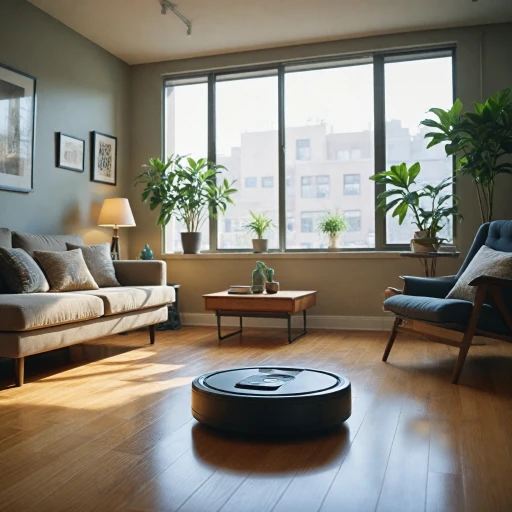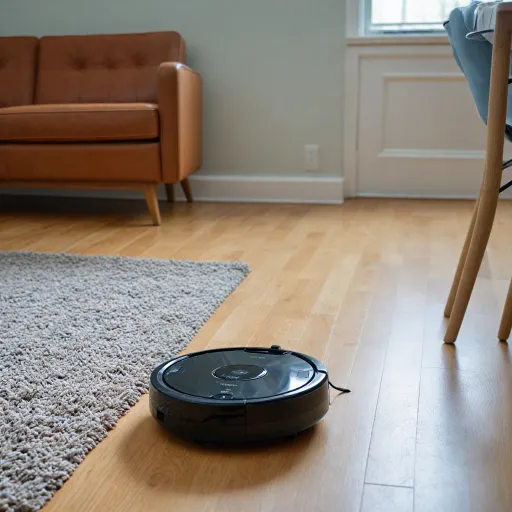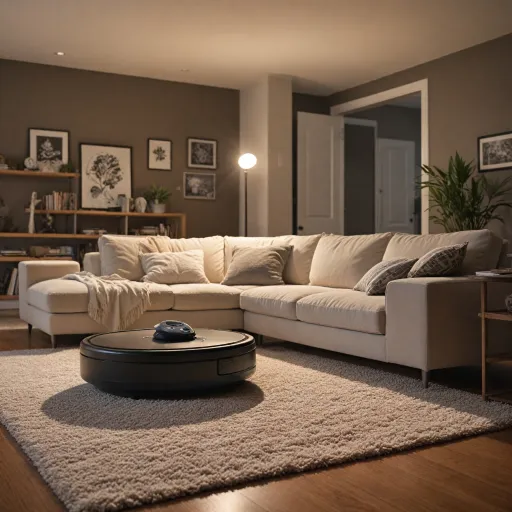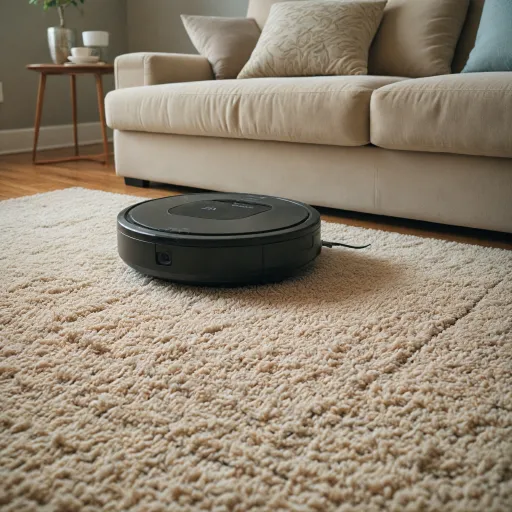
Understanding the ride on vacuum cleaner concept
What Sets Ride On Vacuum Cleaners Apart?
Ride on vacuum cleaners, sometimes called ride sweepers or ride floor sweepers, are industrial-grade machines designed for large-scale cleaning tasks. Unlike traditional upright or canister vacuums, these sweepers allow the operator to sit and drive the machine, making them ideal for commercial spaces, warehouses, and expansive industrial floors. The main advantage is their ability to cover high square footage efficiently, saving both time and labor costs.
How Ride On Sweepers Work
These machines are typically powered by robust batteries or fuel engines, enabling them to operate for extended periods without interruption. Their sweeping mechanisms are engineered to handle debris, dust, and even larger particles, making them suitable for environments where cleanliness is crucial. Many models, such as those from Karcher, feature advanced filtration systems to capture fine dust and improve air quality during cleaning.
Key Applications and Use Cases
- Industrial floor cleaning in factories and warehouses
- Commercial spaces like shopping malls and airports
- Large-scale debris and dust sweeping in parking lots
Ride on sweepers are not just about size—they are about efficiency and effectiveness. Their design allows operators to skip content-heavy manual labor and focus on maintaining high standards of cleanliness with less effort. This is particularly important in settings where dust and debris can impact safety or product quality.
Why Consider a Ride On Vacuum Cleaner?
When you compare these machines to traditional floor sweepers or even robot vacuums, the difference in performance and capability becomes clear. Ride on sweepers are built for heavy-duty tasks, making them a smart investment for businesses that need reliable, high-powered cleaning solutions. If you want to explore more about how these products fit into the broader world of automated cleaning, check out this in-depth view of robot sweeping technology.
Key features to look for in a ride on vacuum cleaner
What Sets Ride On Vacuum Cleaners Apart?
When evaluating a ride on vacuum cleaner, understanding the main features is crucial for making an informed decision. These machines are designed for efficiency, especially in large commercial or industrial spaces where traditional floor sweepers or manual cleaning methods fall short. Here’s what to keep in mind as you compare products and prices in this category.
- Battery Power and Runtime: Most ride on sweepers are battery powered, offering the flexibility to clean without being tethered to a cord. Look for models with high-capacity batteries that can handle extended cleaning sessions without frequent recharging.
- Cleaning Width and Capacity: The cleaning path, or sweeping width, determines how much floor area can be covered in one pass. Larger industrial floor sweepers typically offer wider cleaning paths and bigger debris hoppers, making them ideal for commercial spaces with high dust and debris levels.
- Filtration and Dust Control: Effective dust management is essential, especially in environments with fine debris dust. Advanced filtration systems help trap particles, improving air quality and reducing the need for secondary cleaning.
- Ease of Use and Navigation: Features like intuitive controls, adjustable seats, and clear sightlines enhance the operator’s experience. Some ride sweepers include skip navigation or content skip buttons for quick access to key functions.
- Build Quality and Durability: Industrial floor sweepers are built to withstand tough environments. Brands like Karcher are known for their robust construction and reliability, making them a popular choice for commercial cleaning operations.
- Maintenance and Support: Consider how easy it is to access parts and perform routine maintenance. Reliable customer support and readily available replacement parts can reduce downtime and keep your ride sweeper running smoothly.
- Price and Value: While price is a significant factor, it’s important to view the product’s long-term value. Higher upfront costs may be justified by greater efficiency, durability, and lower maintenance needs over time.
For a deeper understanding of how ride on vacuum cleaners fit into the broader landscape of cleaning technology, you can explore the rise of robotic vacuum cleaners in North America. This context can help you compare ride sweepers with other automated cleaning solutions and decide which is best for your needs.
| Feature | Why It Matters |
|---|---|
| Battery Powered | Enables flexible, cordless cleaning for large areas |
| Wide Cleaning Path | Reduces cleaning time on expansive floors |
| High Filtration | Controls dust and improves air quality |
| Durable Build | Withstands heavy use in industrial settings |
| Brand Reputation (e.g., Karcher) | Indicates reliability and support |
Comparing ride on vacuum cleaners to robot vacuums
How Ride On Vacuum Cleaners and Robot Vacuums Stack Up
When you compare ride on vacuum cleaners to robot vacuums, the differences are clear in terms of scale, power, and intended use. Both products aim to simplify cleaning, but their approaches and capabilities diverge significantly.
- Coverage and Efficiency: Ride on sweepers are designed for large, open spaces like warehouses, commercial floors, and industrial environments. Their high-capacity batteries and powered sweeping systems allow them to tackle debris, dust, and even heavier materials over wide areas. Robot vacuums, on the other hand, excel in smaller, residential settings where they can navigate around furniture and clean under tables with minimal supervision.
- Operation and User Involvement: A ride floor sweeper requires an operator to sit and drive, offering direct control and the ability to skip content or areas as needed. Robot vacuums are autonomous, using sensors to avoid obstacles and skip navigation challenges, but may struggle with large debris or high-traffic commercial spaces.
- Cleaning Performance: Industrial floor sweepers, such as those from Karcher, are capable of handling heavy-duty debris dust and sweeping tasks. They are built for durability and can operate for extended periods. Robot vacuums are more suited for daily maintenance of dust and light debris, especially on hard floors and carpets. For those interested in optimizing carpet cleaning, this guide to choosing the ideal automatic vacuum for carpet cleaning offers useful insights.
- Price and Investment: The price of a ride sweeper is significantly higher than most robot vacuums due to its size, battery capacity, and industrial-grade build. However, for commercial cleaning, the investment can be justified by the time saved and the thoroughness of the cleaning process.
- Flexibility and Accessibility: Robot vacuums are easy to set up and require little maintenance, making them ideal for homes and small offices. Ride on sweepers are better suited for environments where manual sweeping would be too time-consuming or physically demanding.
| Feature | Ride On Vacuum Cleaner | Robot Vacuum |
|---|---|---|
| Best For | Industrial, commercial, large floor areas | Residential, small offices, daily maintenance |
| Operation | Operator-driven, powered ride | Autonomous, programmable |
| Debris Handling | Large debris, dust, sweeping debris | Light dust, small debris |
| Price Range | High (industrial product) | Moderate to low |
| Brands | Karcher, other industrial sweepers | Various consumer brands |
In summary, while both ride on vacuum cleaners and robot vacuums have their place in modern cleaning routines, the choice depends on the size of the area, the type of debris, and the level of automation desired. For those managing commercial or industrial spaces, ride sweepers and floor sweepers capable of handling high volumes of debris dust are essential. For everyday home cleaning, robot vacuums offer convenience and efficiency.
Benefits of using a ride on vacuum cleaner
Enhanced Productivity and Time Savings
One of the most significant advantages of using a ride on vacuum cleaner is the boost in productivity. These machines are designed for large-scale cleaning, making them ideal for commercial and industrial floor spaces. Compared to traditional sweepers or manual cleaning, a ride sweeper can cover more ground in less time. This efficiency means less downtime and more consistent results, especially in high-traffic areas where dust and debris accumulate quickly.
Superior Cleaning Performance
Ride on floor sweepers are powered by robust motors and equipped with advanced sweeping mechanisms. They are capable of handling a wide range of debris, from fine dust to larger particles. Many industrial floor sweepers, such as those from Karcher, feature high-capacity dust containers and efficient filtration systems. This ensures that even the toughest debris dust is collected, leaving floors cleaner and safer for daily operations.
Operator Comfort and Safety
Unlike walk-behind sweepers, ride floor sweepers are designed with operator comfort in mind. The ride design reduces physical strain, allowing users to clean for extended periods without fatigue. Features like ergonomic seating, intuitive controls, and clear lines of view contribute to a safer cleaning experience. This is especially important in commercial and industrial settings where safety standards are a priority.
Cost Efficiency Over Time
While the initial price of a ride on vacuum cleaner may be higher than smaller sweepers, the long-term savings are notable. These machines reduce labor costs by allowing a single operator to clean large areas quickly. Additionally, their durability and battery-powered operation mean fewer interruptions for maintenance or charging. Over time, the investment in a quality product like a Karcher ride sweeper can lead to significant cost reductions in cleaning operations.
Versatility Across Applications
Ride sweepers are not limited to one type of floor or environment. They are suitable for a variety of surfaces, including concrete, tile, and industrial floor spaces. Whether you need to sweep a warehouse, a commercial facility, or a large retail space, these sweepers are capable of adapting to different cleaning requirements. This versatility makes them a practical choice for businesses looking to skip content switching between multiple cleaning machines.
- High-capacity dust and debris collection
- Efficient battery-powered operation for extended use
- Designed for both commercial and industrial applications
- Reduces the need to skip navigation between different sweepers
Potential challenges and limitations
Challenges in Maneuvering and Accessibility
While ride on vacuum cleaners and ride sweepers are engineered for high efficiency, their size and powered design can limit access to tight or cluttered spaces. Unlike compact robot vacuums or manual sweepers, these machines may struggle to reach under furniture or around obstacles. This can leave some areas of the floor unswept, especially in environments with complex layouts or heavy equipment.
Battery Life and Maintenance Considerations
Battery-powered ride floor sweepers and industrial floor sweepers offer mobility, but their runtime is limited by battery capacity. Extended cleaning sessions in large commercial or industrial spaces may require frequent recharging or battery swaps. Additionally, regular maintenance is essential to keep the product operating at peak performance. This includes checking brushes, filters, and dust compartments to prevent debris dust buildup and ensure effective sweeping.
Price and Investment Factors
The price of a ride on vacuum or industrial ride sweeper is typically much higher than that of standard floor sweepers or robot vacuums. For businesses, this means a significant upfront investment. While the efficiency and coverage can justify the cost for large-scale cleaning, smaller operations may find the price challenging to absorb. It's important to compare models and view product specifications carefully before making a decision.
Training and Operational Complexity
Operating a ride on floor sweeper or karcher ride sweeper often requires training. These machines come with controls and features that may not be intuitive for all users. Incorrect use can lead to inefficient cleaning or even damage to the floor or the sweeper itself. Ensuring staff are properly trained is crucial for safe and effective operation.
Noise and Environmental Impact
Some industrial ride sweepers and commercial floor sweepers generate significant noise during operation. This can be disruptive in environments where quiet is valued, such as schools or healthcare facilities. Additionally, powered sweepers may have a larger environmental footprint compared to manual sweepers, depending on battery disposal and energy consumption.
- Limited maneuverability in tight spaces
- Higher price compared to standard sweepers
- Battery life constraints for powered models
- Need for regular maintenance and training
- Potential noise and environmental concerns
Tips for choosing the right ride on vacuum cleaner for your needs
How to Evaluate Ride-On Vacuum Cleaners for Your Space
When searching for the right ride-on vacuum cleaner, it’s important to consider your specific cleaning needs and the unique characteristics of your environment. Here are some practical tips to help you make an informed decision:- Assess Your Floor Type and Area Size: Not all ride sweepers are created equal. Industrial floor sweepers are designed for large, open spaces, while smaller ride floor models may suit commercial areas with tighter navigation needs. Consider the type of debris dust and the floor surface—some sweepers are better for fine dust, others for larger debris.
- Compare Battery Life and Power: Battery-powered ride sweepers are popular for their flexibility, but battery capacity varies. High-capacity batteries are essential for extended cleaning sessions, especially in industrial or commercial settings. Always check the runtime and charging requirements before making a choice.
- Check Sweeping and Vacuum Capabilities: Some products combine sweeping and vacuum functions, while others focus on one. If your cleaning routine involves both dust and larger debris, look for sweepers capable of handling both efficiently. Karcher ride sweepers, for example, are known for their dual-action cleaning systems.
- Review Product Features and Accessories: Features like adjustable brushes, dust filters, and ergonomic seating can make a big difference. Industrial floor sweepers often come with advanced filtration to capture fine dust, while commercial models may prioritize maneuverability and ease of use.
- Consider Maintenance and Support: Reliable after-sales support and easy access to replacement parts are crucial. Check if the manufacturer offers clear maintenance guidelines and whether service centers are available in your area.
- Compare Price and Value: Price can vary significantly between models. While it’s tempting to skip content on less expensive options, remember that higher upfront costs may mean better durability and performance. Always compare features, warranty, and long-term value.
| Feature | Commercial Ride Sweepers | Industrial Ride Sweepers |
|---|---|---|
| Area Coverage | Medium to large | Very large |
| Battery Life | Moderate | High |
| Debris Handling | Light to medium | Heavy, industrial debris |
| Price Range | Lower to mid | Mid to high |
| Best For | Retail, offices | Warehouses, factories |












